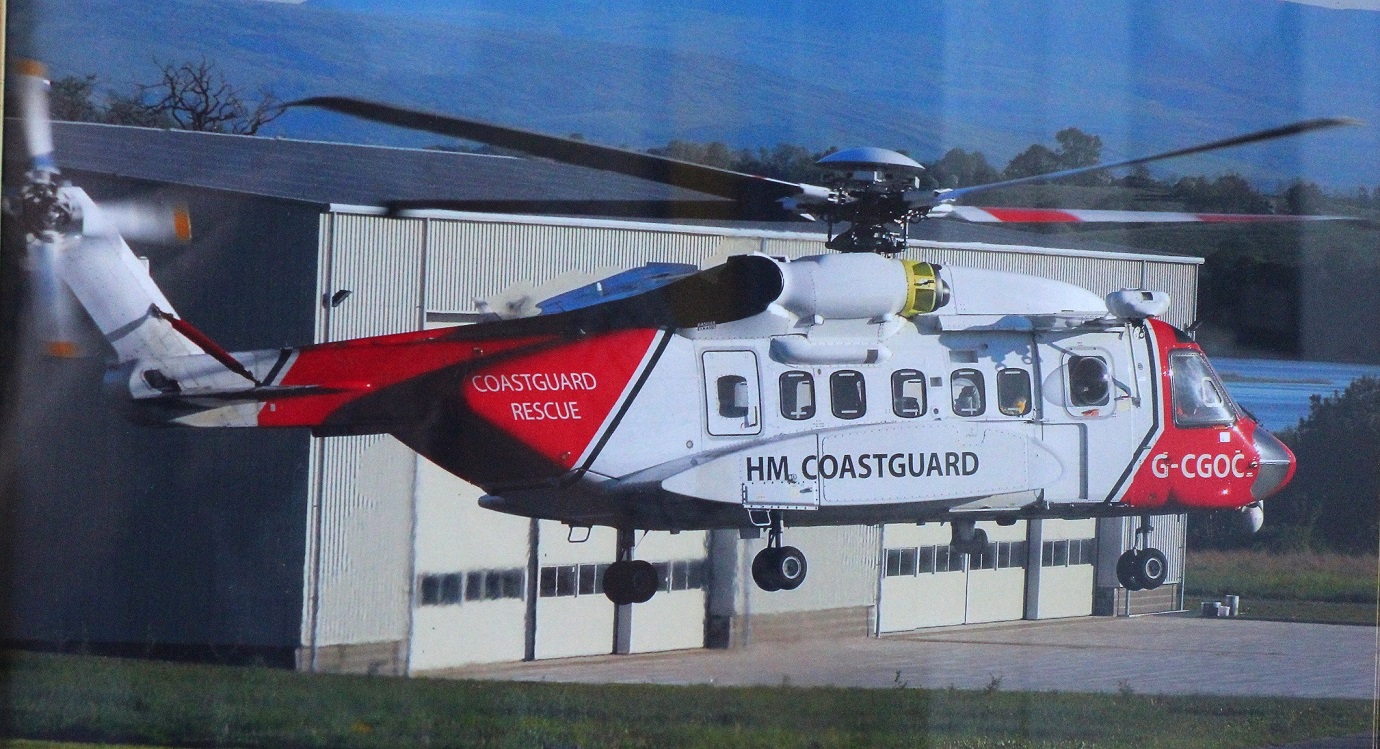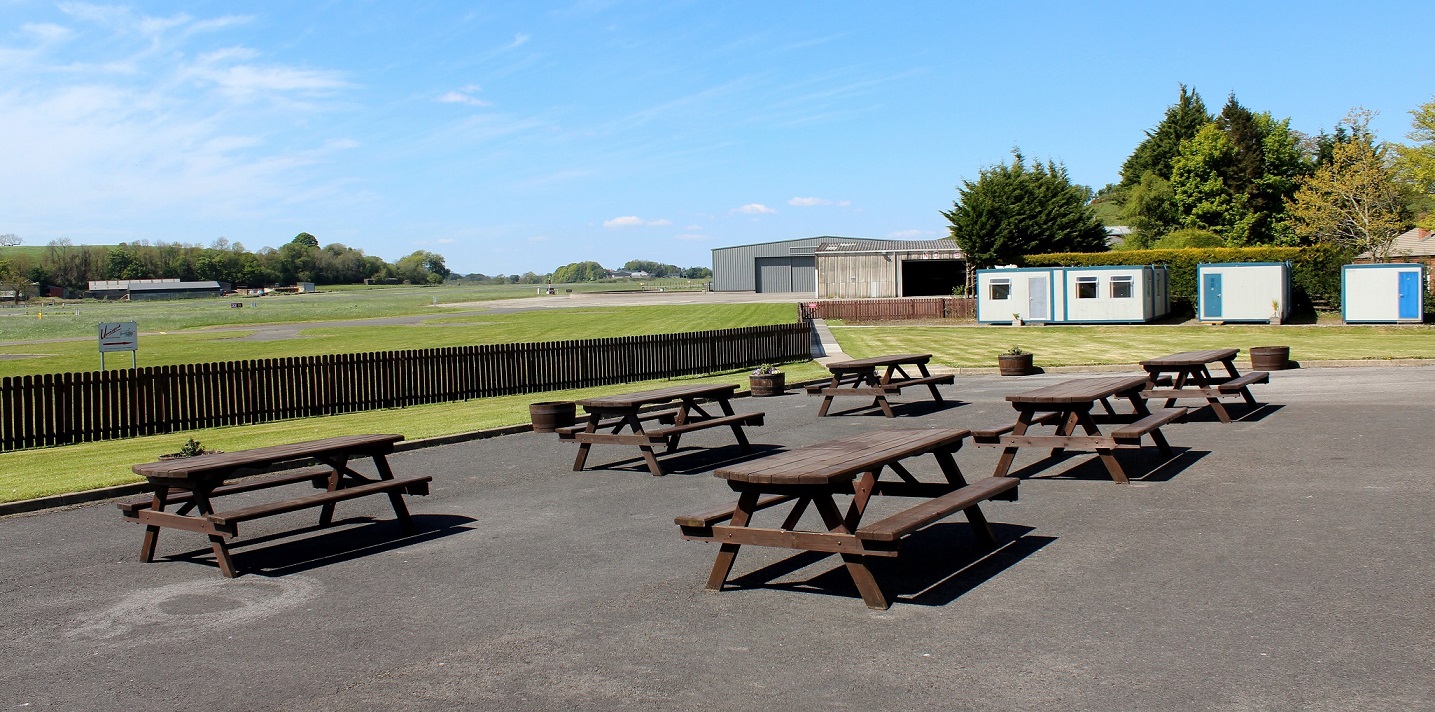Enniskillen
ENNISKILLEN: Military aerodrome later civil regional airport
(Also known as St ANGELO in WW2 and beyond)
Note: This picture (2016) was obtained from Google Earth ©
Note: All pictures by the author unless notified. The fourth picture is of an aerial photograph, presumably taken in the 1950s (?) when the airfield was derelict, on display in the terminal building.
PICTURE GALLERY IN MAY 2017
Military users: WW2: RAF Fighter Command (Satellite for ALDERGROVE & KILLADEAS)
133 Squadron (Vickers-Supermarine Spitfires)
RAF Coastal Command 17 Group
131 OTU [Operational Training Unit] (Consolidated PBY-5 Catalinas) Main base KILLADEAS?
235 Sqdn (Bristol Beaufighters)
Post WW2: 272 MU [Maintenance Unit)
Note: Apparently engaged on mothballing Avro Ansons for later disposal by various means
ARMY OPERATIONS
It appears that during "The Troubles" the Army used this airfield for helicopter operations.
Notes: These pictures are of photographs displayed in the terminal building of aircraft operating commercially.
SECOND PICTURE GALLERY IN 2017
British airline users: British Airways, Derby Airways
Foreign airline users: Crossair
Flying clubs & schools: Enniskillen Flying Club, Spectrum Aviation
Helicopter ops: Unique Helicopters
Operated by:
1965: Mr A V West Esq
1980s/1990s: Saint Angelo Flight Centre Ltd
2000: St Angelo Aviation Ltd
Location: SE of Lough Erne, 3nm NNE of Enniskillen town centre
Period of operation: Military: 1941 to 1947.
In 1975 & 1990 listed as being a private airfield used by GA aircraft.
In 1985 listed as being disused. Reactivated for being a civil aerodrome/airport in ? In April 2004 it seems ENNISKILLEN was again closed but apparently reopened in September the same year. Obviously a site with, as they say, a “chequered history”
Note: These maps are reproduced with the kind permission of Pooleys Flight Equipment Ltd. Copyright Robert Pooley 2014.
Runways: WW2: 15/33 1335x46 hard 05/23 1701x46 hard
1965: 15/33 1169x46 hard 04/22 488x46 hard
Note: Runway 04/22 was unlicensed but decribed as suitable for use by light aircraft
1990: 15/33 1334x23 hard
2000: 15/33 1426x30 hard
2001: 15/33 1326x30 hard
NOTES: In late 1944 St ANGELO was obviously a major base for RAF Coastal Command with 3144 personnel recorded as being on station. No WAAFs though.
A STORY
In his book British Midland Airways B G Cramp (a Captain with the then Derby Airways - later a senior Captain in British Midland) tells this story: “Early on in January Mr. Dennis Aldridge, Charter Manager, approached Captain Cramp and informed him that the committee set up to run Enniskillen airfield in County Fermanagh, N. Ireland, had written to ask whether Derby Airways would be interested in running a service to the area. Aldridge himself had seen the airfield during a visit to the area in the previous year, and he thought there might be some potential here. After some deliberation, Cramp agreed to visit the area and take Aldridge with him. So it was that in mid-January the pair flew to Belfast and then hired a car for the three hour drive to Enniskillen.”
“The country in the area of the town, situated between Upper and Lower Lough Erne, is beautiful and attracts thousands of tourists a year, in addition to the pilgrims who made their annual pilgrimage to the shrine on the small island in Lough Derg in County Donegal. These facts, coupled with the decision to stop the steamer service from Glasgow to Londonderry on which many Irish and Scots had relied for their annual trek to Donegal, Sligo and Bundoran, attracted Aldridge and Cramp to the idea.
Mr. Ian Cooper, who owned the Imperial Hotel in Enniskillen entertained them both to dinner, and explained the situation to Cramp. The following morning Cramp saw the airfield for himself for the first time. His heart fell, for the only one runway of the wartime airfield was in use, and to use this sheep would have to be driven off first. At the north end of the runway someone had decided to rip up one complete section of concrete, but at the south end the ground rose sharply and sitting right in the middle of the take-off path, on top of the hill, was a church. There was no doubt that the Argonaut would not be visiting the airfield of St. Angelo, but the Dakota would just, but only just, be able to.”
“Whilst in the area Cramp and Aldridge carried out a proper survey of the region, assessing its remoteness, and therefore the desirability of a service to the area, together with a look at the light industry which could take advantage of the service should it be mounted. Upon their return to Derby, Cramp put in his recommendation to the Board that the service should be mounted and the license applied for immediately. In the meantime the airport committee were informed of the recommendation, and the fact that a tower radio and a radio beacon for navigational aid would have to be installed before a public transport service could be authorised by the Ministry of Aviation.”
“The recommendation to the Derby Airways Board to operate the Enniskillen service was taken up and the licence applied for, and the 17th February saw the public announcement on all this. The initial intention was for the existing Luton – Derby – Belfast service to be extended to Enniskillen, and also that the Derby – Leeds Bradford – Glasgow service should also be extended to Enniskillen.” To cut to the parts that might interest us: “Friday the 13th, an ominous combination of day and date in most people’s minds. Such a combination occurred in March 1964, and it was on this date that the Company made yet another tiny piece of aviation history by operating the first commercial service ever into St. Angelo, Enniskillen.”
I believe this story is well worth telling. In the 1930s only a windsock in a suitable field was required to denote a regional ‘airport’ providing ‘scheduled’ services. A tent or hut for passenger convenience was optional. Thirty years later an ATC facility plus at least one radio navigation aid was a minimum requirement. But, not everything went to plan.
“Laid on primarily as a proving flight, a party of keen anglers who were members of the Slack and Parr Sports Club were going to taste the delights of uninhibited fishing in Ulster where there is no coarse fishing season at all.” (This might have changed since 1964?) “The Company had approached Slack and Parr Ltd, of Kegworth, very near to the new East Midlands Airport, with a proposition to fly the angling section of the Sports Club into County Fermanagh at cost price to the Company. It is of interest to note that as a direct result of this particular visit Slack and Parr ultimately built a factory at Enniskillen.”
I really do believe that those “in authority”, especially those in government, have little if no appreciation of how such links work. Indeed, without aviation links it is hard to imagine how the global network we have today could have been established. Without much doubt all business is fashioned essentially by people meeting face to face. Getting to know, appreciate and trust each other. Links today are often made via the internet of course, but I still suspect all major deals are made by people actually meeting each other?
“Dakota G-AOFZ, commanded by Capt. “Andy” Oates, with Captain Cramp as his co-pilot, departed Derby at 1615 on the 13th bound for Enniskillen direct. The weather situation was not good, due to fog. All of the airfields in the Republic of Ireland were out in fog, as were Prestwick, (My note: PRESTWICK was renowned for being fog free – hence it being developed for trans-Atlantic flights), Glasgow and Edinburgh. The only airfields which were in fact open were Enniskillen, Belfast, and the Isle of Man, and even as the flight progressed Belfast went out in fog."
"Now for this particular operation a temporary radio link had been set up at Enniskillen, manned by an air traffic controller loaned for the occasion from Belfast. Unfortunately this radio link did not function, so all instructions to the aircraft were passed by telephone from Enniskillen to Belfast and thence by radio to the aircraft. By the time “FZ” arrived overhead Enniskillen the weather situation over the rest of the country was decidedly nasty.”
Without much doubt the fact that Derby Airways had equipped their Dakotas with the very latest ‘blind flying aids’ saved the day. “Those waiting on the ground for the first flight heard the aircraft pass overhead, indeed heard it turn away towards the northwest until the sound slowly disappeared and silence reigned. The air traffic controller appeared on the war-time control tower balcony and pistol in his hand, pointed it to the sky. He pulled the trigger and there was – a click. He re-entered the control tower, appeared again and pointed his pistol again at the sky. Again a click, but no flash. Angrily he dashed back again into the control tower and reappeared a third time on the balcony with his Verey pistol pointing skywards. It was not needed, “FZ” was on the point of touching down.”
Compared to the navigation aids commercial airliners are equipped with today, which are simply superb, I think we need to remember that even in the 1960s great strides had been made to effect precision let-downs and approaches. “As they touched down, the aircraft crew were relieved to see that some thoughtful person had removed all the sheep from the runway, but it was not until the landing run was almost complete that the biggest surprise was revealed to them. The crowds that had gathered to see the arrival must have been in their thousands. As someone later remarked, it was as if the whole of the County Fermanagh had turned out to witness the event.”
There is a basic truth in this, the majority of people are still fascinated by watching aircraft fly. They turned up in their thousands to witness a single balloon launch in the 19th century and air show attendances today mostly far exceed major sporting events. The tiny minority of very vocal complaints from the ignorant ‘chattering classes’ must be ignored. Make no mistake about it, most people love to fly – they demand it. They might usually regard it as nothing more than an extended bus trip, but the fact remains they see flying as part and parcel of getting around long distances with mostly effortless ease as part and parcel of modern living. Indeed, the experience of flying has become so ‘normal’ that few if any now “dress up” for the occasion, compared to forty years ago.
THIRD PICTURE GALLERY IN 2017
Note: The third picture, of the Piper Archer on the apron, is actually on part of the western end of the WW2 runway 05/23 .
GENERAL AVIATION AT St ANGELO
Still known as St ANGELO in 1976/7 (as indeed it still is) it appears that only three GA types were based here: The Piper PA-28 Cherokee 140 G-AVYP of the Enniskillen Flying Club, Cessna F172H G-AWPV of Lakeland Aviation and the Cessna F.150J G-AWUU of Woodgate Aviation Ltd
In 2006, St Angelo Aviation were offering for training at any rate, a rare if not unique, (in the UK), Rallye 110ST. They also offered a Robinson R.22 for rotary flight training.
FOOTNOTE
It is well worth reading the Wikipedia entry for this airfield, and how it appears that certain people demolished much of the infrastructure to prevent it becoming an important if not unique WW2 heritage site.
We'd love to hear from you, so please scroll down to leave a comment!
Leave a comment ...
Copyright (c) UK Airfield Guide































